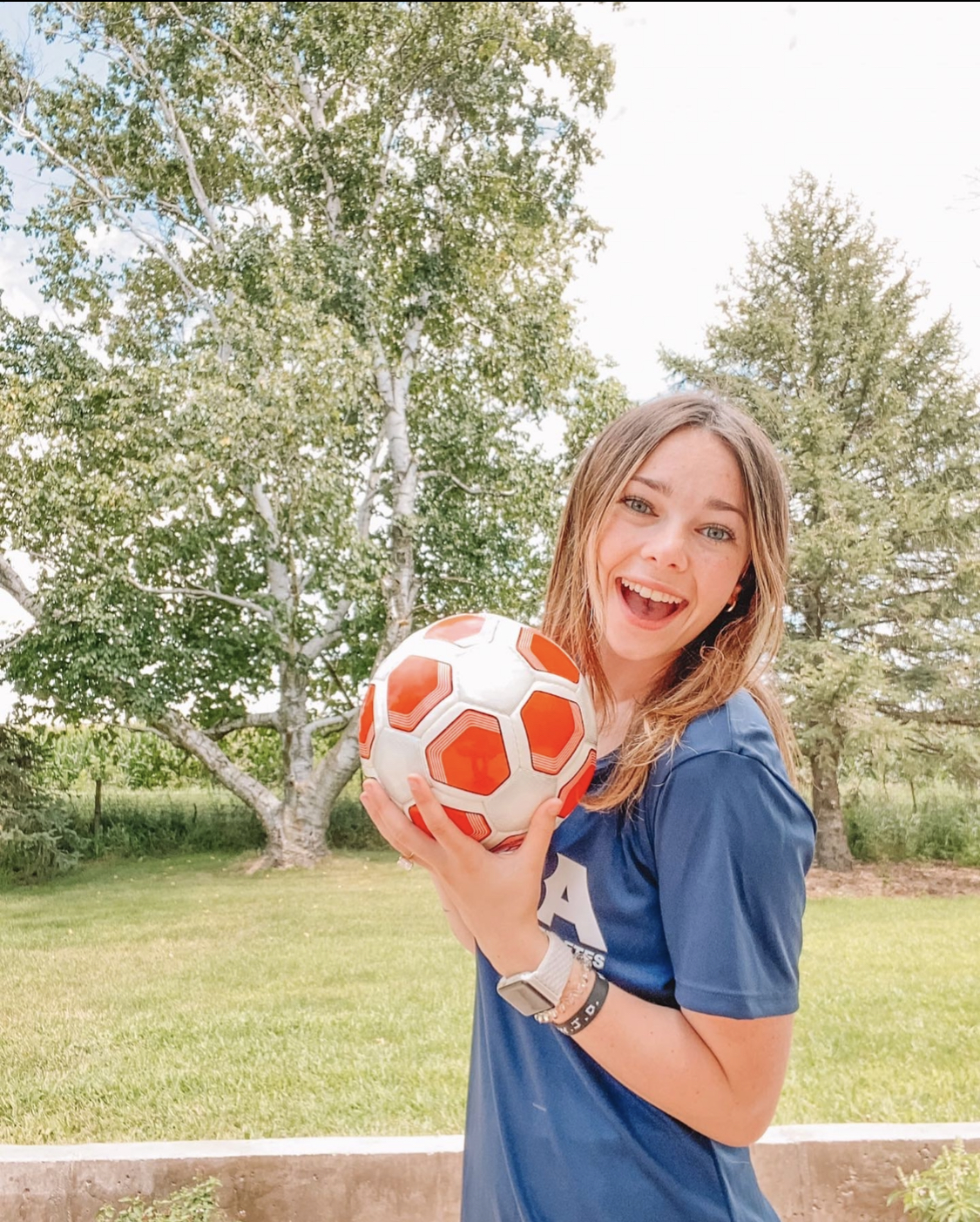Thursday Throwdown: Bailey (Martin) Ahrenholtz

Each Thursday during October’s celebration of National Blind Sports Month, USABA athletes will be sharing their experiences and stories of navigating physical activity and workout spaces in their communities. They will share their tools, challenges, and triumphs as blind or low-vision athletes or those who support them.
This week we are honored to feature USABA Sport Ambassador Bailey (Martin) Ahrenholtz. Bailey is majoring in sports public relations at Northern Iowa and has been part of the athletic community since elementary school. Her love of sports grew when she became visually impaired as a teenager. Bailey has been involved in beep baseball, track, swimming, goalball and blind soccer. She also participated in the inaugural USABA Emerging Stars Camp in 2019 at the U.S. Olympic & Paralympic Training Center in Colorado Springs.
Here are Bailey’s answers to the questions we posed for “Thursday Throwdown”…
Q: What does your training look like in preparation for a competition?
When preparing for a competition, my goal is to make everything in training second nature. I primarily focus on my weaknesses, so I’m able to walk on the field confidently.
Q: What do you need to train for soccer and what are some of the biggest obstacles to finding somewhere to practice soccer?
Soccer is a great sport because all you need to practice is a ball. When I practice, I use a soccer ball, blindfold, cleats, and (if available) a net. The biggest obstacle has been finding a net to use while practicing. If I can’t find a net, I typically set up cones and have a sighted person be my guide.
Q: As blind soccer is a team sport, what creative ways have you found to practice goalball on your own?
The best way I have found to practice soccer on my own is by playing with my guide dog. My guide dog (Vera) loves soccer balls, so I get a lot of practice playing offense. Another way I practice playing soccer by myself is by playing with a muted (or regular) soccer ball. This motivates me to not lose the ball while dribbling and sharpens my ability to easily locate a still ball.
Q: What are some resources people in our community could utilize to train?
First things first…get in touch with USABA and see what equipment/resources they have available. The next step is to get in touch with a local gym and see if any trainers could walk you through the equipment for your first few sessions. Lastly, there is always Google. There are hundreds of accessible
workout videos to watch online and you can purchase cheap home workout equipment.
Q: What are some challenges athletes with vision impairments face in training and leading active lives?
I believe one of the biggest challenges athletes with vision impairments face in training is themselves. I think a lot of athletes need to focus on building their confidence and learning to trust themselves when they are competing.
Q: How have you adapted your process, plan, or technology to accommodate your vision?
One of the biggest adaptations I have made to my training is finding ways to train in my own home. Whether that was purchasing some new equipment or getting creative, I have found training at home is the most effective way to ensure I always get a workout in.
Bailey’s Workout:
Circuit 1: Warmup
-Stretch
-1-mile bike ride/jog
Circuit 2: 10:00 amrap
-20 wall balls
-15 devil’s press burpees
-200m on rower
Circuit 3: KB movements
-3×10 heavy squat
-3×10 heavy back lunge
-3×10 deadlift
Circuit 4: Cooldown
-Banded recovery movements
-Pt
